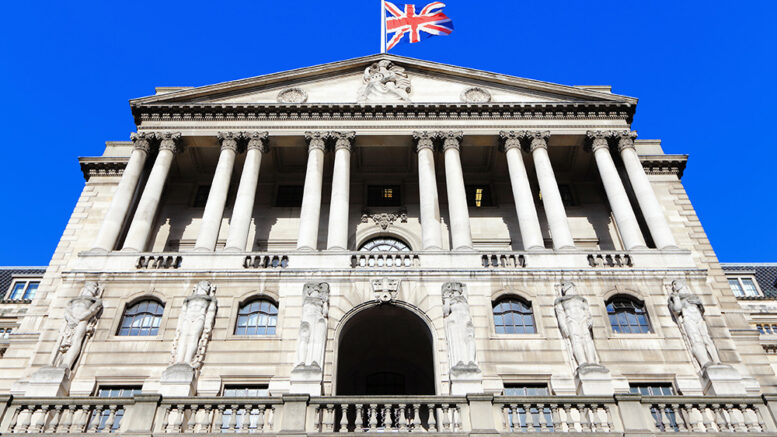The Bank of England has decided to hold the base rate at 4.5%, despite growing calls for a reduction from homeowners and property investors. The Monetary Policy Committee (MPC) voted by a majority of 8-1 to maintain the current rate, with one member favouring a cut to 4.25%. This decision comes as inflation remains higher than the Bank’s 2% target, reaching 3% in January 2025.
The move is expected to maintain stability in the property market, providing reassurance to landlords and property investors navigating an uncertain economic environment. While some stakeholders were hoping for a rate cut, many industry experts believe that holding steady will help avoid potential market volatility and provide a more predictable lending landscape.
Stability brings confidence for landlords
The decision to keep the base rate at 4.5% signals the Bank’s intention to take a cautious approach in managing inflation and market conditions. Nicholas Mendes, mortgage technical manager at John Charcol, explained: “The Bank’s decision signals a preference to keep monetary policy steady until there is clearer evidence that inflation is easing sustainably. With headline inflation rising to 3% in January and expected to climb further by summer, policymakers remain cautious about moving too soon and risking a reversal of progress in stabilising prices.”
For landlords, this stability could work in their favour. Alpa Bhakta, CEO of Butterfield Mortgages, noted that the broader outlook remains positive for property investors. “While property investors were hoping for a rate cut, the economic climate and property investment outlook are in a much better position than in previous years,” she said. “The upcoming Spring Budget and new tax year could influence market conditions, but it’s essential for lenders to stay proactive, supporting borrowers and brokers to ensure the market can capitalise on its strong start to the year.”
Ben Thompson, Deputy CEO at Mortgage Advice Bureau, also pointed to the benefits of stability for the housing market. “The Bank of England’s decision to hold the base rate at 4.5% shouldn’t give prospective and current homebuyers much cause for concern,” he said. “A small rise in inflation and a degree of global economic uncertainty calls for a cautious approach, and many people will no doubt feel a sense of relief that the Bank is playing it safe.”
Rate hold could create opportunities in the rental sector
Maintaining the current base rate could create opportunities for landlords looking to expand their portfolios or secure better financing options. Sarah Thompson, managing director at Mortgage Scout, highlighted how some lenders are already offering competitive deals despite the base rate remaining unchanged. “Mortgage rates remain competitive, with some five-year fixed deals, such as HSBC’s 3.98%, now sitting below the Bank of England’s base rate,” she said. “This suggests that lenders anticipate rate cuts in the coming year, providing borrowers with opportunities to secure long-term stability.”
Kevin Shaw, national sales managing director at LRG, suggested that the decision could encourage more activity in the rental market. “Today’s decision by the Bank of England to hold interest rates was not a surprise, but it was a disappointment,” he said. “At LRG we’ve had a strong start to 2025 but we are aware that the increased sales figures (year-on-year) are in part due to a rush to beat the imminent Stamp Duty increase.”
For landlords, stable rates provide a clearer outlook when planning long-term investments. Lower borrowing costs could become available later in the year, but for now, the predictable rate environment allows landlords to make informed decisions without the pressure of immediate market shifts.
Cautious optimism for the year ahead
While some market commentators have called for a more aggressive rate-cutting strategy, others believe that holding rates steady will provide the market with much-needed consistency. Nathan Emerson, CEO of Propertymark, said: “It is reassuring to see the base rate held, especially considering the many national and international factors that continue to shape the global economy currently.”
Robert Sadler, Vice President of Real Estate at Excellion Capital, supported the decision: “While property investors and financiers would’ve liked to see a cut, which would have definitely inspired a boost in industry activity, on balance the sector can afford to wait until May for this to happen. Recent history has shown us that cutting rates too low too soon can lead to harmful inflation, which is the cause of the current higher rate environment.”
For landlords, the outlook remains positive despite the rate hold. Jonathan Samuels, CEO of Octane Capital, summed it up: “A hold on the base rate will, at least, ensure that market stability continues to build over the coming months as buyers continue to act with the reassurance that mortgage rates are unlikely to climb.”
The Bank of England’s next move will likely be influenced by how inflation and wage growth behave in the coming months. For now, landlords and property investors can benefit from the consistency of stable rates, allowing them to plan and adapt without the uncertainty of rapid rate changes. The question is - will the Bank of England take a more aggressive stance if inflation begins to ease more quickly than anticipated?








